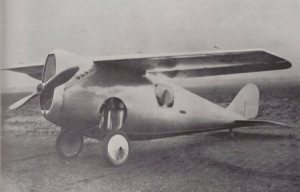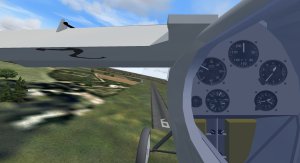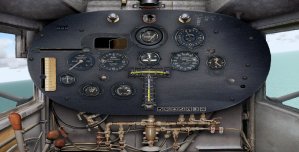Simanaitis Says
On cars, old, new and future; science & technology; vintage airplanes, computer flight simulation of them; Sherlockiana; our English language; travel; and other stuff
A PILOT’S VIEW, EPISODE 3
THE FIRST airline passengers were as hearty as their pilots, both residing in open cockpits. But maybe wind in the face wasn’t a necessary part of the experience. And before long, even pilots of racing planes were encapsulated, and some to an extreme.
This third episode of A Pilot’s View explores the cockpit transition through the 1914 Benoist Type XIV, the 1920 Zeppelin-Staaken E-4/20 and the 1920 Dayton-Wright RB Racer, with a brief coda to Charles Lindbergh’s Spirit of St. Louis.

The 1913 Benoist Type XIV, flown on the St. Petersburg Tampa Airboat Line, the world’s first regularly scheduled heavier-than-air commercial endeavor (http://wp.me/p2ETap-ow).
On January 1, 1914, pilot Tony Jannus took his first passenger, Abram C. Pheil, St. Peterburg’s Mayor, on a 22-mile flight across the bay to Tampa.

A pilot’s view, Act 3, Scene 1, approaching St. Petersburg, Florida, in Microsoft Flight Simulator. The 1914 Benoist Type XIV.
The Benoist Type XIV’s open cockpit gave Tony and his passenger an unencumbered view of the bay, with not so much as a windscreen separating them from the wind and spray. Given Tony’s preference for traveling within 10 ft. of the water, the trip was likely a wet one.
Other aircraft of the time already had enclosed cabins, including the 1912 Avro Type F and 1913 Sikorsky Russky Vityaz (see http://wp.me/p2ETap-2dq). True, passengers might appreciate amenities, but there was controversy whether this isolation was wise for a pilot.
For example, the 1920 Zeppelin-Staaken E4/20 was so advanced a design that Allied post-World-War-I sentiments dictated its destruction. Yet, in its initial configuration, the Zeppelin-Staaken’s pilot and copilot resided in the open.
In a later iteration, there was an enclosed flight deck for the Zeppelin-Staaken’s pilot and copilot. See http://wp.me/p2ETap-W8.

A pilot’s view, Act 3, Scene 2, buzzing Munich’s Frauenkirche in Microsoft Flight Simulator. The 1920 Zeppelin-Staaken E4/20.
Racing aircraft designers were slower to isolate pilots from the elements. However, there were exceptions in the James Gordon Bennett Cup competition of 1920. The Curtiss-Cox Cactus Kitten monoplane and Texas Wildcat biplane had transparent cockpit hatches, installed after the pilot was in place.

Above, the 1920 Curtiss-Cox Texas Wildcat. Below, this 1920 Nieuport design had only transparent ports for the pilot to view the outside world. Images from Racing Planes and Air Races A Complete History Volume 1 Reference Series No. 1, by Reed Kinert, Aero Publishers, 1969.
Was a forward view even necessary? The fuselage of a special 1920 Nieuport appeared to have a conventional cockpit, but a closer look revealed that its pilot was fully encapsulated, left with only a modicum of lateral vision.

The Dayton-Wright RB Racer competed in the 1920 Gordon Bennett races, unsuccessfully despite its advanced features. Image from Racing Planes and Air Races.
The 1920 Dayton-Wright RB Racer’s advanced features included monocoque construction, retractable gear and adjustable camber control (http://wp.me/p2ETap-17V). However, its only view forward came from the pilot poking his head through hinged side windows.

A pilot’s view, Act 3, Scene 3, on final approach in Microsoft Flight Simulator. The 1920 Dayton-Wright RB Racer.
The idea of no forward vision seems radical. But seven years later, Charles A. Lindbergh flew from New York to Paris with no more forward view than the instruments of his Ryan Spirit of St. Louis.

A pilot’s view, Act 3, Scene 4, the Atlantic Ocean in Microsoft Flight Simulator. Charles A. Lindbergh’s 1927 Spirit of St. Louis.
This series will continue, with emphasis on instruments and controls, not merely the view from the flight deck. ds
© Dennis Simanaitis, SimanaitisSays.com, 2014


